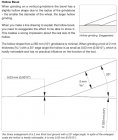Flat grind on bowl gauge
Is there an advantage having a flat grind versus a concave grind on a bowl gouge.Sorby pro edge vs grinding wheel.Need to make a decision to buy a sharpening system
Is there an advantage having a flat grind versus a concave grind on a bowl gouge.Sorby pro edge vs grinding wheel.Need to make a decision to buy a sharpening system

